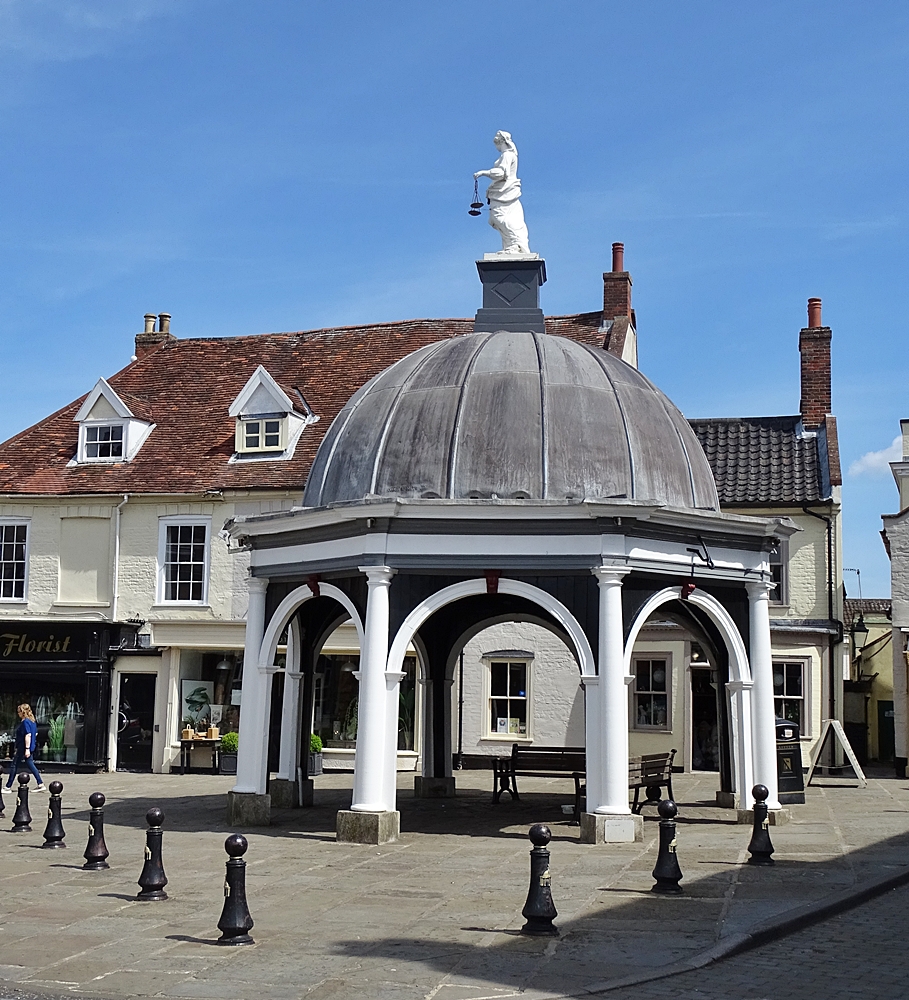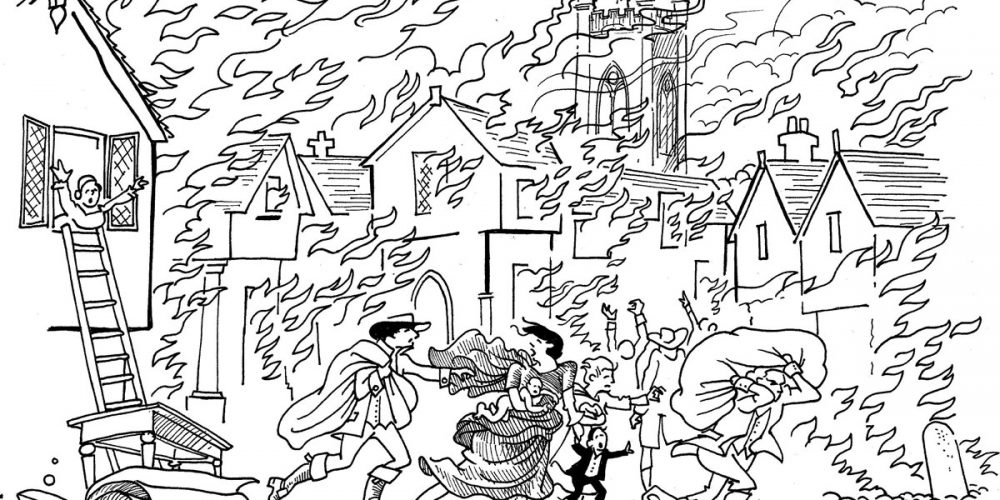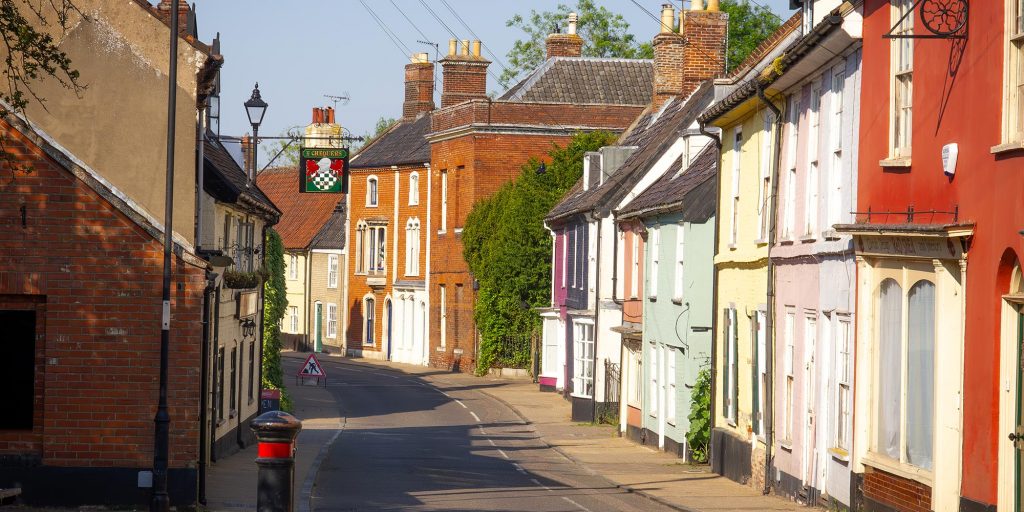The Great Fire
In the 17th century, the whole town was devastated by a fire which occurred in March, 1688. It either destroyed, or severely damaged, most of the buildings in the town centre including the two Market Crosses, St. Mary’s Church, the Grammar School, and all the principal houses and shops. Holy Trinity Church, however, survived unscathed, and a small, brass plaque on the church door testifies: “Here was the Fire stayed, 1688”.
Many residents were made homeless and jobless, and a public appeal was broadcast, resulting in donations from all over the country to assist the sufferers. As a result, the town was virtually rebuilt.
A new Corn Cross was provided, which stood on the site occupied by the present Black Dog standard; and the lead-domed Butter Cross which still exists. The statue of Justice was added in 1754, a very handsome figure, thought to have been made in the London workshop of Henry Cheere. The large number of fine houses built in red-brick, with decorative porticoes, which continue to enhance the appearance of the town, suggest that townsfolk soon recouped their losses caused by the Fire.
Indeed, the town flourished throughout the Georgian period: the King’ s Head and Three Tuns opened fashionable Assembly Rooms providing music and entertainment, a theatre was built in the Castle Yard in 1773, and a Spa and Bath House was established just across Outney Common at Ditchingham.
The town, now rebuilt, with a spacious Market Place, and well paved and well lit, compared with other small centres, attracted the wealthy gentry, delighted by the variety of shops and entertainment which Bungay could offer. It became dubbed ‘Little London, and famous characters known to have visited here in the Georgian period include the notorious highwayman, Dick Turpin, George IV (when Prince Regent) and the diarist Parson James Woodforde. The poet George Crabbe received his early education here, and Eliza Bonhote (1744 – 1818), born in a house near the King’s Head became a best selling author, whose novels include Bungay Castle, 1796.



